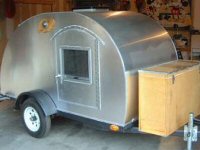 All things are just my opinion..Rock on..
All things are just my opinion..Rock on..Mimimalism
Not sure the type of candle your looking at,however.All open flame candle's,lamp's,lantern's...Need good clean fuel,wheather it's wax,kerosene,lamp oil,olive oil etc,& the right amount of Fresh air.depending on the type of fuel,wick,container the flame sits in...As an example: Whatever im burning,i'll stay w.the manufacture's recomendations..Useing kerosene only in a kerosene lamp..W/the same type of wick that came w/the produck..The recomended olive oil in a olive oil lamp..Ultra pure lamp oil in a wax based oil lamp..Different wicks soak up different fuels at different speeds..They also need more or less air depending on the size of the wick,material,container,Temp they burn at...All candles/lamps are a little different..By a good product,From a reliable company,(not a wallmart) that sells All the needed parts,fuels ,wicks to keep your choice of light working for years..Even my favorite little olive oil lamps from lehman's..will not bun properly if not used under the right conditions..If your outside..then a little soot don't matter..In a tear,use good lamps,the right way...they'll be just fine..1 of the easyer things you can do..is keep the fuel leval 1/2 full no lower...Lower fuel means longer time for the wick to get the fuel to the flame...If im in a survival mode..There might be more important things that need to be done..So just try to be prepared..A reliable light not taken care of...Well to me would be like takeing dead batteries w/ my new flashlight...  All things are just my opinion..Rock on..
All things are just my opinion..Rock on..
 All things are just my opinion..Rock on..
All things are just my opinion..Rock on.." You have enemies? Good! It means you've stood up for something at least once in your life."
WINSTON CHURCHILL
WINSTON CHURCHILL
-

vinoscooter - Teardrop Master
- Posts: 140
- Images: 20
- Joined: Tue Oct 19, 2004 10:48 am
- Location: Eastern Wa St
so i have a couple of questions.
what about the old 'bedwarmer' concept -- there are antique ornate brass ones still around in the uk I bet -- a large shallow metal lidded container, which was filled with coals and slipped into the bed a little while before retiring; the coals were returned to the fireplace and banked to make the fire available for morning. could you create something similar for a charcoal briquet or two?
among friends / family (Scouts,Renfaire, SCA, civil war reenactors, a friend's boyfriend is a Buffalo Soldier reenactor, ) I have seen a lot of ways of keeping a fire from going out overnight. not so easy with modern synthetic materials, maybe.
but still worth considering.
second question -- one of those little coughlan's candle lanterns you can use in a tent (yeah, yeah, but if you're careful you can do this in the vestibule) that is specially designed to let you heat a drink on top of the globe?
could you vent that out with something along the lines of dryer vent?
there are some other options if your weather permits. A double layer of translucent builder's plastic arranged over a tent frame makes a fine windbreak/watershed, while allowing sunlight through to warm/dry out whatever's underneath the canopy. why a double layer, you ask?
because you want to ventilate the underneath side so the condensation forms on top of it instead of dripping directly down on you. in a pinch this water can be collected and filtered for drinking/cooking.
what about the old 'bedwarmer' concept -- there are antique ornate brass ones still around in the uk I bet -- a large shallow metal lidded container, which was filled with coals and slipped into the bed a little while before retiring; the coals were returned to the fireplace and banked to make the fire available for morning. could you create something similar for a charcoal briquet or two?
among friends / family (Scouts,Renfaire, SCA, civil war reenactors, a friend's boyfriend is a Buffalo Soldier reenactor, ) I have seen a lot of ways of keeping a fire from going out overnight. not so easy with modern synthetic materials, maybe.
but still worth considering.
second question -- one of those little coughlan's candle lanterns you can use in a tent (yeah, yeah, but if you're careful you can do this in the vestibule) that is specially designed to let you heat a drink on top of the globe?
could you vent that out with something along the lines of dryer vent?
there are some other options if your weather permits. A double layer of translucent builder's plastic arranged over a tent frame makes a fine windbreak/watershed, while allowing sunlight through to warm/dry out whatever's underneath the canopy. why a double layer, you ask?
because you want to ventilate the underneath side so the condensation forms on top of it instead of dripping directly down on you. in a pinch this water can be collected and filtered for drinking/cooking.
Mopar's what my busted knuckles bleed, working on my 318s...
-

Laredo - Donating Member
- Posts: 2017
- Images: 0
- Joined: Mon Jul 05, 2004 10:42 pm
- Location: West Texas




 What was Tom thinking? Never mind, now he has a new young hottie! Nicole is 40+ Katie is 26. A 43 year old actor needs someting to make him feel young again
What was Tom thinking? Never mind, now he has a new young hottie! Nicole is 40+ Katie is 26. A 43 year old actor needs someting to make him feel young again  . Jacka$$!
. Jacka$$! Wright
Wright

 Carry back up..non-breakable landle lamp...
Carry back up..non-breakable landle lamp... 
